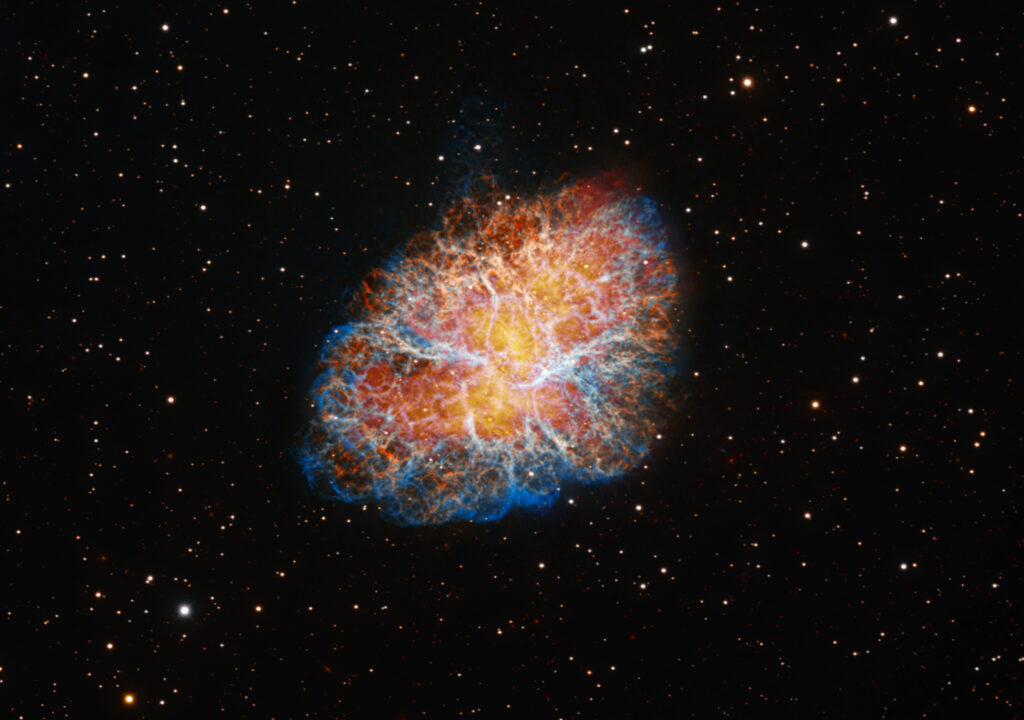The presented image was obtained using a 4-meter Nicholas Mayall telescope located on the territory of the Kitt Peak National Observatory. It demonstrates the Crab Nebula, one of the most famous objects in the history of astronomy.

The Crab Nebula was first seen by astronomer John Bevis in 1731. However, he did not attach much importance to his find. The nebula was rediscovered by astronomer Charles Messier in 1758, who entered it under the first number in his famous catalog of celestial objects.
Already in the XX century, studying the images of the nebula, astronomers found that it was expanding. After estimating the speed of expansion, they find out that its age is about 900 years. This made it possible to correlate the Crab Nebula with a supernova observed in the Earth’s sky in 1054. Thus, it became the first confirmed supernova remnant.
In 1967, astrophysicist Franco Pacini predicted that a rapidly rotating neutron star with a powerful magnetic field should form as a result of a supernova outbreak. Within a few months, his claim was proven: a pulsar rotating at a speed of 30 revolutions per second was discovered in the center of the Crab Nebula.
Subsequent observations have established that the Crab Nebula is located at a distance of 6,500 light-years from the Sun. Its diameter is 11 light-years. The complex shape of the nebula is explained by the interaction of the supernova remnant with the surrounding matter (it was ejected by the dead star before and during the explosion). The stream of high-energy particles emitted by the pulsar collides with the surrounding gas cloud, which leads to the formation of shock waves in it, somewhat resembling diverging circles on water.
According to https://www.noirlab.edu/
Follow us on Twitter to get the most interesting space news in time
https://twitter.com/ust_magazine

